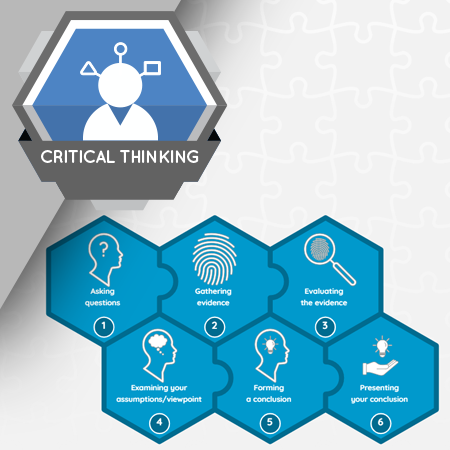
It’s human nature to make quick judgements and fast decisions, but fast decisions are not always the best decisions. The critical thinking process encourages you to slow down, define the problem or question you are considering, and examine various viewpoints. Taking a systematic approach can help you make better decisions.
Learning Objectives
- List the steps in the critical thinking process
- Describe qualities of good questions
- Define several different intellectual values
- List examples of research methods used to gather evidence
- Define the terms qualitative evidence and quantitative evidence
- Define the terms primary source and secondary source
- Describe methods for evaluating evidence
- Explain the difference between facts and opinions
- Define the terms assumption and inference
- Explain the importance of considering other points of view
- Describe what happens after you form a conclusion
Language: English
Micro-module: No
Micro-module Series: No
